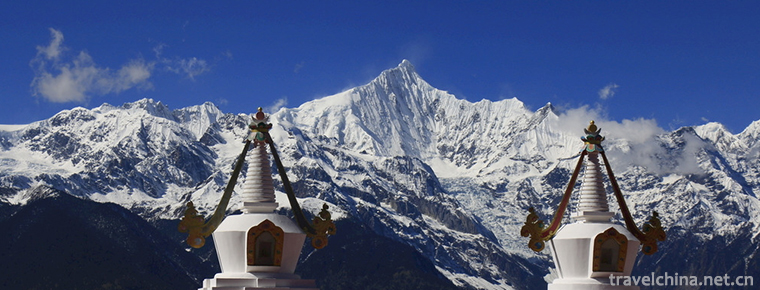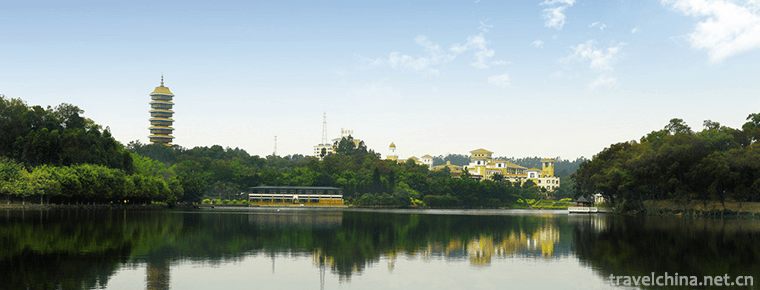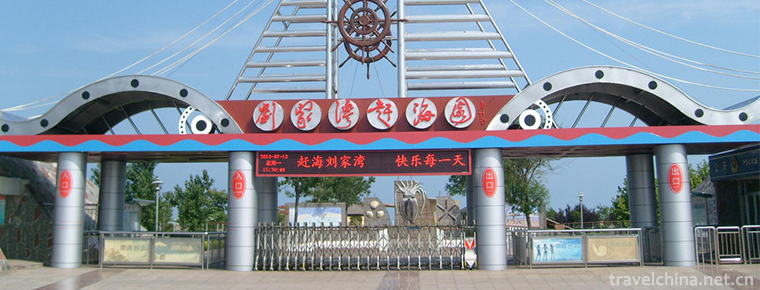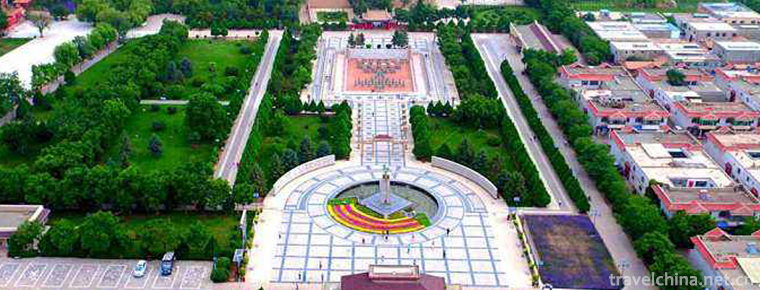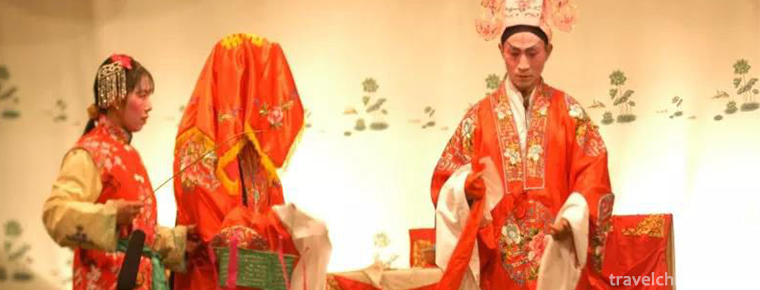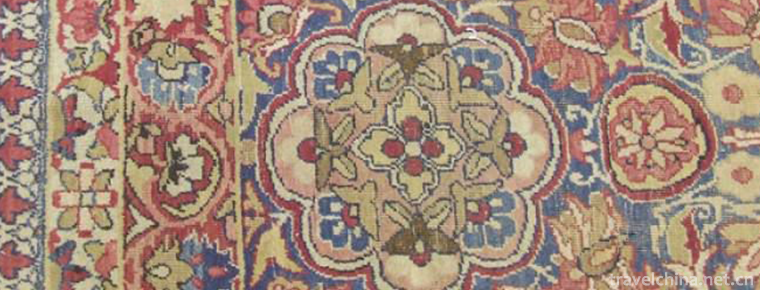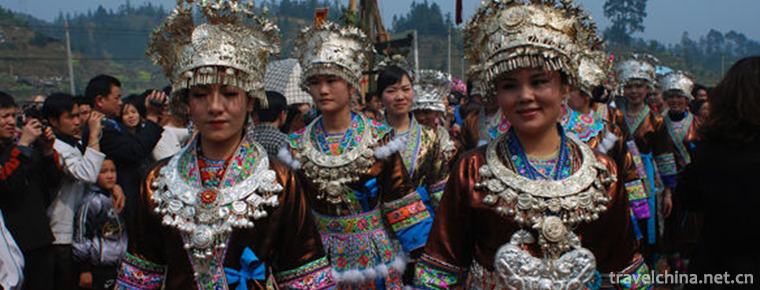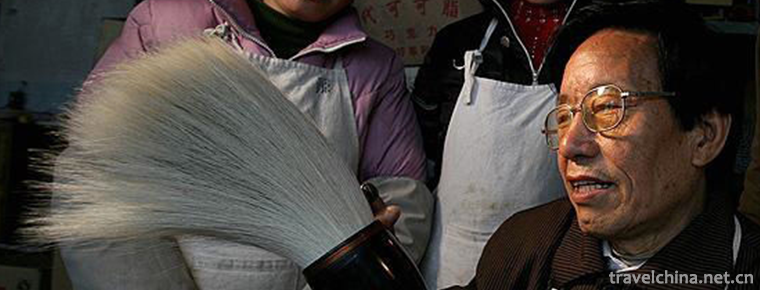Nanzhao Custom Island Dali
Nanzhao Custom Island Dali
Nanzhao Custom Island in Dali is one of the three islands in Erhai Lake, located in Shuanglang Township at the southeast end of Eryuan County, the golden section of Cang Er National Scenic Area. The island is surrounded by water, East by Jizu Mountain, a famous Buddhist holy place, north by Shibaoshan, south by Dali, West by Erhai Lake, Cangshan. Because of its unique tourism resources, it is known as "Dali scenery in Cang'er, Cang'er scenery in Shuanglang". Dali Nanzhao Custom Island is listed as one of 25 top-quality tourism projects in Yunnan Province, and is the designated reception unit of the 1999 Kunming World Horticultural Exposition.
Practical information
Best season
From January to December, the climate is suitable. Dali has a small annual temperature difference, Changchun has no summer, spring and autumn are connected.
It is suitable for sightseeing all the year round.
Suggest playing
2-3 hours
Admission ticket
50 yuan
Opening Hours
08:30~17:00
Traffic information
The ferry terminal on the south side of Shuanglang Town boards the island on a ferry boat with a voyage of about 5 minutes.
In addition, Erhai cruise ships usually dock at Nanzhao Fengfeng Island. Private cruises usually cost 100 yuan for half-day trips, but can be bargained; Erhai cruises will also dock at Nanzhao Island for 140 yuan, with ethnic performances on board.
Taste the unique products of Erhai Lake.
geographical position
Nanzhao Custom Island in Dali occupies the head of the water in the Erhai three islands. Nearly 100 mu of island area, lying quietly under the blue sky, blue water in the middle and upper reaches of Erhai Lake. In the distance, it looks like a giant shuttle, in a strange and unique landform.
Main attractions
Sculpture
If you take a yacht from the south near the island, tourists first see a group of "Erhai Daughters" cast copper sculptures on the reefs near the island. This is the image of two fisherwomen bathing one by one, vigorous and elegant, and echoes the island's natural rock "drunk eight immortals".
There are two wharfs on the island, the main Wharf in the East and the auxiliary Wharf in the north. Dayun wharf can berth four large cruise ships at a time. The area of the wharf is 6,600 square meters. On the square, there are bronze sculptures of the "mother of Sha Yi", with 10 stone pillars behind them. They represent the 10 sons of the mother of Sha Yi and symbolize the 10 primitive ways of human labor. This is carved on the basis of the myth of "Jiulong" in the Book of Later Han Dynasty, Biographies of Southwest Yi. Legend has it that in Ailao Mountain in Western Yunnan, a woman named Sha Yi was pregnant with a feeling of wood when fishing. She gave birth to 10 sons. The youngest son was very close to the dragon that the wood had turned into. His name was Jiulong. This was the meaning of "the person sitting on his back" in the local language at that time. Nine brothers pushed him king together. Later, the ten brothers became the ancestors of all nationalities. Jiulong myth is very famous in the west of Yunnan and has almost become a creation myth.
Avalokitesvara
To the west is the second square, "Yunnan Fuxing" square, with a vertical statue of Han Baiyu Guanyin in the center. This is a 17.56-meter-high statue of Aweiye Guanyin (or Xiaoyao Guanyin), the tallest Chinese-white-jade Guanyin statue in the world. "Yunnan Fuxing" is the praise of Helen, an American scholar, for the exquisite statue of Dali Guanyin in his book "The Avalokitesvara of Yunnan". On the west side of the statue are two relief walls, each 21 meters long and 4.6 meters high. On the front side are the legends of Guanyin's 18th transformation in Dali mythology. On the back are the gold-lined "Guanyin Professor's Notes on the Founding of Xinuluo" (part of Nanzhao Zhongxing Picture Volume) and the "Manwang Rite Buddha Picture" (part of Zhang Shengwen Picture Volume of Dali State).
Nanzhao Palace
Further ahead is the main building on the island, Nanzhaoxing Palace, with a total floor area of more than 8,000 square meters. Architectural style takes Tang Dynasty architecture as the keynote, integrates Nanzhao and Tubo architectural styles, and strives to reflect the era characteristics of multi-ethnic cultural integration in Nanzhao period. This is a group of multi-functional buildings, in addition to providing food and shelter for tourists, its architectural style, exhibits display, voice display and other aspects are high level, is a good place for viewing, leisure, entertainment. It is the main building on the island and the abbreviation of Nanzhao King's Summer Palace. Nanzhao (653-1902 A.D.) has built three capitals in history. Taihe City of Dali is one of them. In addition, Nanzhao King built summer resorts, imperial gardens and hunting grounds around Erhai Lake. Nanzhao King City has military defense capability. According to historical records, the length of its north and south walls is 3350 meters 3275 meters, and the distance between the two walls is 500 meters. This building is not inferior to the size of Beijing Palace Museum at all, and its brilliance has left a heavy mark in historical books. Unfortunately, only part of its ruins can be seen today. Nanzhao used to be a powerful military kingdom in history, but it was originally a small tribe and its influence was only equal to that of a small town. But later, by virtue of its military strength, it annexed other tribes around Erhai (i.e. "imperial edict") and expanded its territory to Erhai area, until it expanded to Sichuan, Guizhou, Guangxi, Yunnan and even Vietnam. Its territory area reached 10736,000 square kilometers, 27 times the area of Yunnan Province, and coexisted with the Tang Dynasty and the Tubo Dynasty for nearly two hundred years. 。 Nanzhao Xinggong Palace was built in imitation of ancient imperial palace. Because the Nanzhao Dynasty was deeply influenced by Tubo culture and Tang culture at that time, the Xinggong Palace adopted "the roof of Tang Dynasty, the walls and windows of Tubo, the foundation and appearance of Dali's civil buildings". The palace covers an area of more than 8,000 square meters and is as magnificent as it was in that year. Besides being influenced by Han culture and Tubo culture, the Bai culture with its own characteristics is also the mainstream here. Benzhu worship is a religious belief of the Bai nationality. Benzhu is the patron god of the ethnic village community, which means "our master". The people of Dali Prefecture advocate the worship of the owner as long as there is a place where the Bai people live together. Therefore, Dali prefecture has the theory of "500 owners". Villages and villages all worship the owner, and all have their own temples with their own main festivals.
The Bai people worship many gods, even more than the Greek gods, and the Greek gods appear purely in the form of "gods". The Bai people have not only gods, but also secular characters. In the Bai people's legends, they all have their own deeds, their original lives, wives and children. In addition, there are also kings, boulders, tree pimple and pig, dog, horse and cow. The supreme principal is a person called "central principal", named Duan Zongbang, the ancestor of Duan Siping, the founding emperor of Dali.
Main square
The west end of the island is the main square, with four copper statues on each side of the wall, and the forged bronze statue of the "central owner" in the middle. He is the Duan Zongbang, who is known as the leader of the five hundred divine kings. Plaza collects the essence of Bai culture, so that tourists can appreciate Bai culture. From the pier in the northern part of the island, butterfly spring can be reached to the west, and from the north, Bai fishing village with natural camp or double corridors can be reached.
Taihu Lake stone
There is a "Taihu Stone Community Scenic Area" on the island. Taihu Stone is a kind of precious garden ornamental stone. It is named for the fact that most of the stones are produced in Taihu Lake. A good Taihu stone is valuable and hard to get. The Taihu rocks on this island are not only various, multifarious and weird, but also magnificent in scale, forestation and community formation.
Weather profile
edit
_The typical three-dimensional climate in Dali is a low latitude plateau monsoon climate. Because of the different altitudes, there are specific sub-tropical and middle subtropical zones, and the North subtropical, warm and humid zones and middle temperate zones. 6 climatic zones, such as cold and humid zone. Temperature decreases with the increase of altitude. It has the characteristics of valley heat, warm dam area, cool mountain area and cold alpine area. It is suitable for the growth of different plants. Because of terrain and elevation.
Nanzhao Custom Island, Dali
Temperature is generally low in the northwest and high in the southeast. The highest annual average temperature in the territory is Nanjian, 18.9 degrees C, the lowest is Jianchuan, 12.3 degrees C, the middle is about 15 degrees C. Influenced by topography and climate, rainfall in the northwest is greater than that in the southeast. Rainfall increases with the increase of altitude, forming seven rainy areas, namely, Sanchong Mountain, Xuebang Mountain, Diancang Mountain, Jizu Mountain, Wuliangshan Mountain, Laojunshan Mountain and Hangcao Back Mountain. Rainfall ranges from 2400 to 2500 mm. The average annual rainfall in the territory is 1053 mm, with Yunlong as the largest, Binchuan and Xiangyun as the least. Therefore, there is the saying that "there is no cold or summer in all seasons, and winter comes when there is rain". Dali has a small annual temperature difference, Changchun has no summer, spring and autumn are connected, all the year round are suitable for tourism.
_Precipitation The water resources of the whole Prefecture belong to the middle water resources area in the whole province, and the surface runoff is 105. 900 million cubic meters, 3.23 billion cubic meters of underground runoff, and 5193 cubic meters of water per capita.
Legend
Legend has it that Nanzhao's ancestor was a woman named Sha'an, who lived by fishing. During the fishing process, she touched the sinking wood and became pregnant. She gave birth to ten sons, and then a couple at Ailao Mountain gave birth to ten daughters. The Jiulong brothers married these women and grew up gradually, and they have been multiplying all the time. This legend was given ten kinds of primitive life and labor meanings by the sculptor Professor Ye Yushan to the ten sons born to Sha Yi's mother, and the paintings of God and Man are vivid. Such as prayer and hunting. Drilling wood to worship fire, removing stones to build houses, etc.









-
Meili Snow Mountain
Meili Snow Mountain, located in the eastern part of Chayu County, Tibet, and the western part of Jingyunling Township, Deqin County, Diqing Tibetan Autonomous Prefecture, Yunnan Province.
Views: 186 Time 2018-11-13 -
Tiantangzhai Tourist Scenic Area
Tiantangzhai (National AAAAA Tourist Scenic Spot, National Nature Reserve, National Forest Park and National Geological Park) is the second peak of the Dabie Mountains.
Views: 183 Time 2018-12-08 -
sanshui forest park
Sanshui Forest Park is located in the north suburb of the southwest town of Sanshui District, Foshan City, Guangdong Province..
Views: 142 Time 2018-12-18 -
Liu Jiawan Chaihai Garden
Located on the eastern coast of Taolu Town, Donggang District, Rizhao City, Liujiawan Chaihai Garden is a national AAAA-level tourist attraction, a popular science education base, and a core scenic sp.
Views: 112 Time 2018-12-26 -
Leitaihan Culture Museum Wuwei
Leitaihan Culture Museum is located in the urban area of Wuwei City. It is the land of the Chinese tourism symbol "Ma Ta Feiyan". Leitai was declared as the key cultural relics protection un.
Views: 183 Time 2019-02-24 -
Gell
"Gar", which means singing and dancing in Tibetan, also means "music and dance", because performing Gar has accompaniment of special instruments. On the staff roster of the Tibetan.
Views: 316 Time 2019-04-30 -
Guangchang Meng Opera
Guangchang Mengxi Opera, a traditional local drama popular in Guangchang County, Jiangxi Province, is one of the national intangible cultural heritage..
Views: 110 Time 2019-05-01 -
Canadian Tibetan carpet weaving skills
Canadian Tibetan carpet weaving skills, traditional handicraft in Huangzhong County, Qinghai Province, one of the national intangible cultural heritage..
Views: 102 Time 2019-05-05 -
Miao Series Slope Cluster
Miao Series Slope Club refers to the festival activities of villages and villages in Rongshui County, Guangxi Zhuang Autonomous Region during the period from the third to seventeenth day of the first .
Views: 149 Time 2019-06-05 -
Xuanbi Production Skills
Xuanbi has a long history. Originated in the Qin Dynasty, it flourished in the Tang and Song Dynasties. At the end of Song Dynasty and the beginning of Yuan Dynasty, there were frequent wars, and the .
Views: 143 Time 2019-07-09 -
Lizhou ancient town
Lizhou ancient town is a big post station of the ancient Southern Silk Road, an ancient town of Liangshan Yi Autonomous Prefecture, and the place where the red army went through the long march..
Views: 191 Time 2020-10-16 -
Mineral resources in Guangan
Guang'an City is located in the middle part of Huaying Mountain. The mineral resources are mainly distributed in Huayingshan, Tongluoshan and Mingyueshan anticlines, and two synclines of Dongcao and Xicao in Linshui county. More than 30 kinds of mineral depo.
Views: 287 Time 2020-12-19
